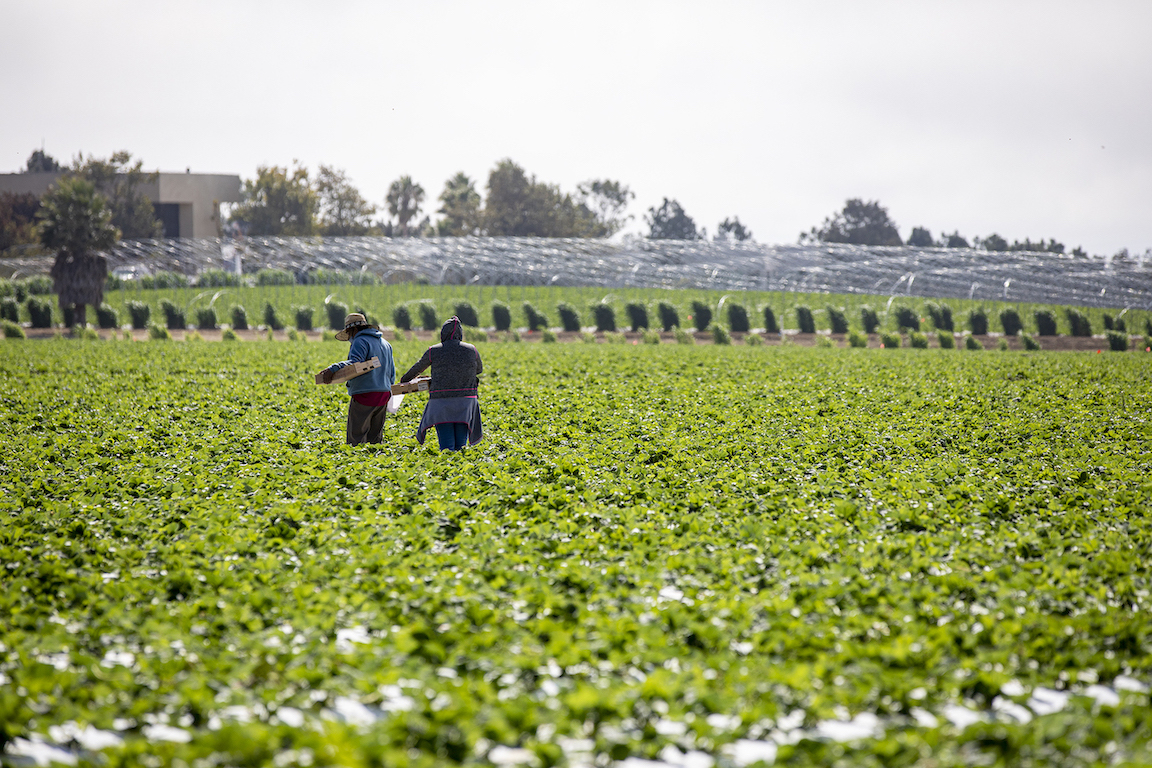Ventura, Santa Barbara County ag revenues both grew 5% in 2021
IN THIS ARTICLE
- Agribusiness Topic
- Jorge Mercado Author
By Jorge Mercado Thursday, August 4th, 2022

Both Santa Barbara and Ventura counties saw total agriculture revenue rise 5% between 2020 and 2021, combining for nearly $4 billion in revenue, despite a steep decline in a usually popular fruit, avocados.
The 2021 crop reports for both Santa Barbara County and Ventura County were released in late July, while the county of San Luis Obispo had not released its 2021 Crop Report yet, as of Aug. 3.
Combined, Santa Barbara and Ventura County’s agribusinesses made $3.9 billion, up from $3.7 billion in 2020. Santa Barbara County growers generated $1.98 billion in total sales, a 5.1% increase from the year prior, while Ventura County accounted for $2 billion, a 5% increase from 2020.
As usual, strawberries were the top crop in both counties, generating a combined $1.56 billion in 2021. Strawberry revenues grew by more 20% or more in each county.
One of the bigger highlights from both Santa Barbara and Ventura County’s crop reports was that avocados saw one of the biggest declines of any crop.
In Santa Barbara County, avocado revenue dipped from $80 million in 2020 to just over $50 million in the latest crop report, falling from sixth place to ninth place on the list of highest-grossing crops in the county.
Ventura county’s avocado sales slipped from $179.7 million in 2020 to $125.9 million in 2021, dropping the fruit from fifth to sixth on the county’s list of top crops.
Rick Shade, the owner of Rick Shade Management in Carpinteria, told the Business Times that the continued drought hurt avocado production last year. That tracks with the report, as avocado production fell by more than 50% in Santa Barbara County from 2020 to 2021.
Chris Sayer, the owner of Petty Ranch in Ventura, told the Business Times he believes avocados will make a big comeback in 2022.
“Avocado trees tend to fluctuate a lot year to year, so if they have a very large crop one year, they’re going to have a much smaller crop for next, and so you usually, over time, see avocado production bounce up and down,” Sayer said. “We are likely to see a bounce back in production in 2022 and so the value will be more in line with what we saw in 2020.”
One of the crops that saw a big bounce-back in Ventura County was lemons. In 2021, lemons generated $253.7 million in revenue, compared to $216.1 million the year before, remaining in second place as the highest grossing fruits in Ventura.
While it’s a sign of recovery for the fruit — which largely benefits from sales to restaurants — Sayer said those revenue numbers still aren’t reaching numbers from 2016, despite higher acreage. Lemon acreage in Ventura County has increased from 14,800 acres in 2016 to 18,300 to 2021.
“Ventura County by itself produces about two-thirds of the lemons sold in the U.S. market, and so when our county production goes up by 20% that has national implications on pricing,” Sayer said. “We really change the market when we have moves like that and that extra production is making itself felt on price.”
As a result, Sayer and his team will continue scaling back its lemon acreage to give more space to avocados.
Currently, the split is about 60/40 in favor of avocados, Sayer said. That is a dramatic turn from the start of the century, when Petty Ranch was dedicating about 80% of its acreage to lemons.
One thing missing from Santa Barbara County’s report was a cannabis insert regarding the revenues from that crop, which was feature in the 2020 Crop Report.
Cannabis was the second most valuable crop in Santa Barbara County in 2020, with $194 million in wholesale revenue.
A similar number in 2021 would have placed cannabis No. 2 again, ahead of wine grapes and behind only strawberries, but cannabis is not officially included in the rankings and revenue totals in crop reports produced by agricultural commissioners in Santa Barbara County and other California counties.
The 2020 crop report was the first time the Santa Barbara County Agricultural Commissioner’s Office surveyed cannabis growers about their revenue.
The 2021 report did not survey cannabis growers. Matt Maiten, the deputy sealer in the Santa Barbara County Agricultural Commissioner’s Office, told the Business Times the office was simply “unable to get crop numbers from this past year,” citing a lack of response for the industry.
For the overall ag industry, Shade said the market in 2021 was a lot better than the year before, as COVID-19 restrictions loosened and more fruit was able to find its way to restaurants and stores, but other concerns continue to affect farmers into the next year.
“Things after the pandemic have been a double-edged sword. Things are getting better, but inflation has hurt,” Shade said. “My fuel prices have doubled in the last year and everything we do is touched by fuel: tractors, generators. And because the overall cost of living is going up, my staff is demanding more money in a tight labor market, so it’s been difficult.”









